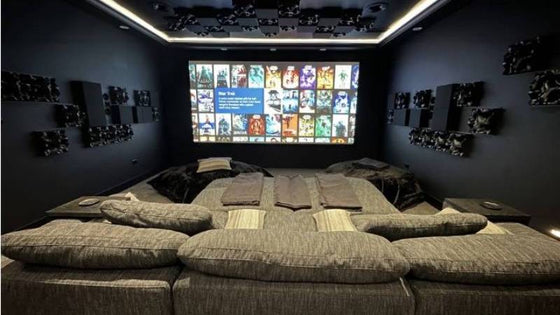Creating a system you love shouldn't be difficult. The Acoustic Frontiers blog is here to help.

ATC and many other pre-eminent manufacturers of what we call “forward firing cone / dome speakers” believe that for optimal speaker off axis response any given woofer or midrange driver should not be operated above ka=2. The reason is that above ka=2 the driver gets increasingly directional resulting in an off axis suckout at the mid / woofer and tweeter (see our blog post for plenty more on the theory and measurement of speaker directivity). Note that this effect can be entirely mitigated by using waveguides for the tweeter and other loudspeaker design techniques.
ka is a dimensionless number that equals circumference (in mm, m, in, ft, etc) divided by wavelength (in the same unit of measure). Circumference can be easily calculated as pi or 3.141 multiplied by the diameter.
One point when calculating ka is that the specified diameter of the driver includes the surround which should not be included in these calculations. For example the 150mm / 5.9″ driver in the ATC SCM19 has an actual cone diameter of 4.9″. Further complicating things are drivers that are purposely designed so that the outer edge of the cone decouples from the inner part. I know at least JBL and ATC and likely a few other manufacturers who are using paper pulp based drivers are trying to get their drivers to behave in this way. Manufacturers who are striving for pistonic response are not going to have drivers that work in this way. As a case in point look carefully at the ATC driver below, from the SCM19. You can see that the cone material is two different colors with a semi-translucent material nearest the surround and there is also a very large soft dome grafted onto the dustcap.
Off axis suckouts (common in many speakers using a largish mid / woofer) look like this:

Ugly, no?
This is what a nice off axis looks like (complements to YG Acoustics who uses a waveguide to match tweeter directivity to midwoofer at the crossover):

Rather than making you calculate ka one of our nice readers made a graphic for everyone that shows ka=2 for different driver diameters:

As an example, a 5″ driver should be crossed over at 1700Hz (or lower, depending on crossover slope) to respect ka=2. You can use this chart to do a quick sanity check on how far off ideal the crossover point is for any given design. Note that there are VERY few designs on the market that truly respect the ka=2 rule! And of course clever things like waveguides make the ka=2 rule less of a rule anyway. As ATC point out off axis is not the only design criteria that matters, and good loudspeaker design is a game of balancing the criteria. However just by understanding this point you should see why two way cone / dome designs using 8″ or 10″ woofers and no tweeter waveguide will have by design poor off axis performance. Likewise designers using tweeters with high crossover points and large “pistonic” metal, ceramic or magnesium 6″ drivers.
Learn how early home theater design, layout, and acoustic treatment improve performance in new home construction.
This media room was intentionally designed to feel like part of the home—not a separate, tech-heavy space. Through careful acoustic planning, equipment integration, and final calibration, we achieved a room that is both beautiful to live in and immersive to experience.
"No other subwoofer system I’ve owned even comes close to what this room delivers. Reaching out to Acoustic Frontiers was one of the best decisions I’ve made—I highly recommend working with them if you want to get the most out of your theater."

Nyal Mellor, Founder, Acoustic Frontiers



Nyal Mellor
Author